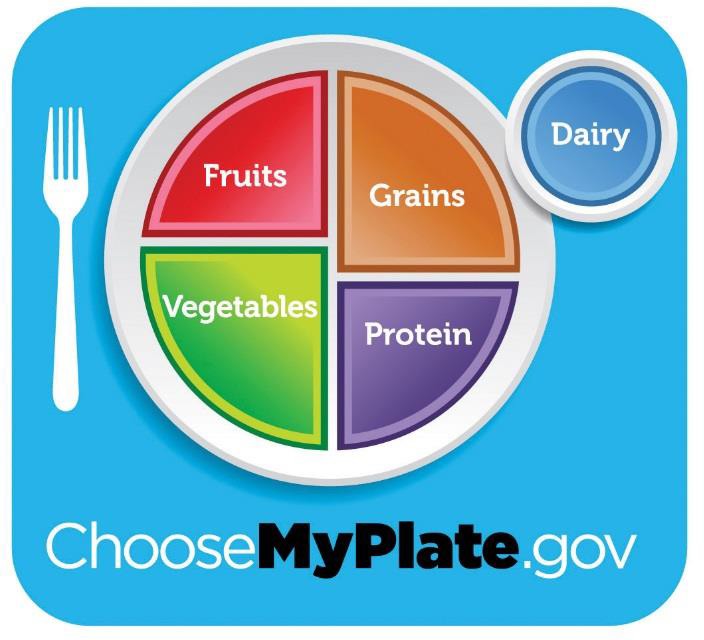Chapter 2: Achieving a Healthy Diet
2.0 Introduction
Let’s talk about a toolkit for a healthy diet. Long before the dietary toolkit full of acronyms such as DRI, RDA, EAR, and UL, daily standards were created with the single goal of keeping workers alive and toiling in the factories and workhouses of the early Industrial Revolution. In the late nineteenth century, powerhouse tycoons operated without fear of legal consequences and paid their workers as little as possible in order to maximize their own profits. Workers could barely afford housing, and depended on what their bosses fed them at the workhouses to fend off starvation.

Living conditions in those days show that the term “starvation wages” was not just a figure of speech. Here is a typical day’s menu:
- Breakfast. 1 pint porridge, one 6-ounce piece of bread.
- Lunch. Beef broth one day, boiled pork and potatoes the next.
- Dinner. 1 pint porridge, one 6-ounce piece of bread.
As public awareness about these working conditions grew, so did public indignation. Experts were eventually called upon to create the first dietary guidelines, which were designed only to provide a typical individual with what they needed to survive each day, and no more. It was not until World War I that the British Royal Society first made recommendations about the nutrients people needed to be healthy, as opposed to merely surviving. They included ideas we now take for granted, such as making fruit and vegetables part of the diet and giving milk to children. Since then, most governments have established their own dietary standards. Food is a precious commodity, like energy, and controlling the way it is distributed confers power.
Sometimes this power is used to influence other countries, as when the United States withholds food aid from countries with regimes of which it disapproves. Governments can also use their power over food to support their most fragile citizens with food relief programs, such as the Supplemental Nutrition Assistance Program (SNAP) and the Women, Infants, and Children Supplemental Food Program (WIC).
The US government has also established dietary standards to help citizens follow a healthy diet. The first of these were the Recommended Daily Allowances (RDAs), published in 1943 because of the widespread food shortages caused by World War II. During the war, the government rationed sugar, butter, milk, cheese, eggs, coffee, and canned goods. Limited transportation made it hard to distribute fruits and vegetables. To solve this problem, the government encouraged citizens to plant “victory gardens” to produce their own fruits and vegetables. More than twenty million people began planting gardens in backyards, empty lots, and on rooftops. Neighbors pooled their resources and formed cooperatives, planting in the name of patriotism.
Today in the United States, there are various measures used to maintain access to nutritious, safe, and sufficient food to the citizenry. Many of these dietary guidelines are provided by the government, and are found at the Food and Drug Administration’s (FDA) new website, ChooseMyPlate.gov. We call this collection of guidelines the “dietary toolkit.”

The government works to provide citizens with information, guidance, and access to healthy foods. How will you decide which information to follow? What are the elements of a healthy diet, and how do you figure out ways to incorporate them into your personal diet plan? The dietary toolkit can be likened to a mechanics toolkit, with every tool designed for a specific task(s). Likewise, there are many tools in the dietary toolkit that can help you build, fix, or maintain your diet for good health. In this chapter, you will learn about many of the tools available to you.
Today, the US government sets dietary guidelines that provide evidence-based nutrition information designed to improve the health of the population.
Nutrients are substances the body needs to stay healthy.
The Supplemental Nutrition Assistance Program (SNAP) provides monthly benefits for low-income households to purchase approved food items at authorized stores. Clients qualify for the program based on available household income, assets, and certain basic expenses.
The Special, Supplemental Program for Women, Infants and Children (WIC) provides food packages to pregnant and breastfeeding women, as well as to infants and children up to age five, to promote adequate intake for healthy growth and development. Most state WIC programs provide vouchers that participants use to acquire supplemental packages at authorized stores.
The Federal Food, Drug, and Cosmetic Act of 1938 gives the FDA authority over food ingredients. The FDA enforces the safety of domestic and imported foods. It also monitors supplements, food labels, claims that corporations make about the benefits of products, and pharmaceutical drugs. Sometimes, the FDA must recall contaminated foods and remove them from the market to protect public health.

